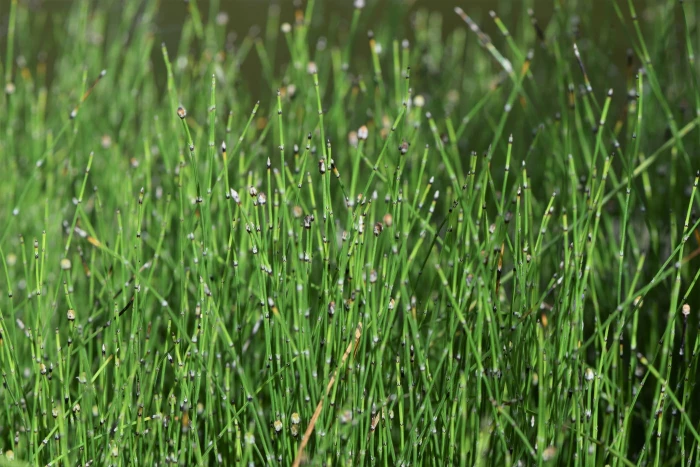Dwarf Scouring Rush
(Equisetum scirpoides)
Dwarf Scouring Rush (Equisetum scirpoides)
/
/

Krzysztof Ziarnek, Kenraiz
CC BY-SA 4.0







































































Estimated Native Range
Climate Requirements for Brent, Florida
| This Plant | Your Site | Plant Suitability for Your Location | ||
|---|---|---|---|---|
| • Precipitation | 2" - 140" | 65" | Aquatic | Aquatic |
| • High Temp. | 13°F - 92°F | 91°F | Your summer temperatures are normal for this plant. | Excellent |
| • Low Temp. | -54°F - 93°F | 42°F | Your winter temperatures are normal for this plant | Excellent |
Summary
Dwarf Scouring Rush is valued for its hardiness and unique texture, making it a favored choice for water gardens, bog gardens, and as a ground cover in moist, shaded areas. It thrives in full sun to part shade, requiring medium to high amounts of water, and prefers soils with standing or slow drainage. While it does not have aggressive roots, it can spread via rhizomes and become invasive if not managed. Gardeners should be aware of its potential to spread and plant it in contained areas or where its growth can be controlled.CC BY-SA 4.0
Plant Description
- Plant Type: Herb
- Height: 0.5-0.9 feet
- Width: 0.389-0.7 feet
- Growth Rate: Slow
- Flower Color: N/A
- Flowering Season: Non-Flowering
- Leaf Retention: Semi-Deciduous
Growth Requirements
- Sun: Full Sun, Part Shade
- Water: Medium, High
- Drainage: Standing, Slow
Common Uses
Border Plant, Low Maintenance, Potted Plant, Salt Tolerant, Water Garden
Natural Habitat
native to moist coniferous forests, wetlands, and along stream banks in North America, Europe and Asia
Other Names
Common Names: Dwarf Horsetail Rush, Dwarf Scouring-Rush, Small Horsetail, Minature Scouring Rush, Tråd-Padderok, Dværg-Padderok, Hentokorte, Prêle Faux-Scirpe, Prêle Scirpoïde, Meldru Kosa
Scientific Names: Equisetum scirpoides, Hippochaete scirpoides, Equisetum reptans, Equisetum hiemale var. tenellum, Equisetum tenellum, Equisetum scirpoides var. alpestre, Equisetum scirpoides var. caespitosum, Equisetum scirpoides var. elatum, Equisetum scirpoides var. minus
GBIF Accepted Name: Equisetum scirpoides Michx.